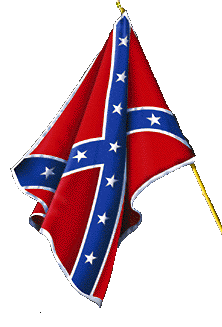
Introduction to Civil War Sharpshooters by George Bisset
Since the days of Morgan's Rifles in the American Revolution, accurate rifle fire has been an American military tradition. At the beginning of the Civil War, special units of skilled marksmen were gathered in both the North and South. Sharpshooter units were often raised from local shooting contests, selecting possible volunteers. Early in the war these units were issued the best rifles available, usually 3-banders, which they supplemented with privately owned telescopic sporting rifles.
The sharpshooter service was considered a distinct branch of the service, and not part of the infantry, as reflected by the green epaulets of its officers. Although the most famous of these units, Berdan's Sharpshooters, wore a distinct green uniform, the majority of these units were uniformed in unremarkable blue or gray. Union sharpshooters in generic blue included Andrew's Massachusetts Sharpshooters, 1st Michigan Sharpshooter Regiment, Brady's Michigan Sharpshooters, Minnesota Sharpshooters, New Jersey Sharpshooters, and in the west, Birge's Sharpshooters.
Regular infantrymen were attracted to the sharpshooter service by the fact that they were posted at the most active points of the picket line and were relieved of monotonous and fatiguing duties in camp. Sharpshooters were regularly used as scouts, using their telescopes to obtain information often operating close to or within enemy lines. Sharpshooters were largely left on their own to choose their targets unless ordered to concentrate on a specific one. They often operated as single individuals, and were extremely informal in the commands they used. A good example is the command used to deploy Birge's Sharpshooters, was simply "Hunt your holes, boys."
The primary role of sharpshooter units was as elite skirmishers. Being better shots, better at using cover; and having better morale than ordinary skirmishers, they tended to defeat enemy skirmishers on the advance or the retreat. The second main tactical function was to deliver long range fire, especially at targets not vulnerable to artillery: enemy officers (identified as small groups of horsemen), artillery batteries, and other enemy snipers. These long-range fires were often delivered at 1,000 or even 2,000-yard range, with the greatest feats being performed by Confederate Sharpshooters armed with Whitworth rifles, which fired a special hexagonal slug. The heaviest 20-30 lb. target rifles used by the Union, firing special "picket" bullets, may have reached similar distances. When firing at such extreme ranges, some sharpshooters found their sights would not adjust far enough, so they fired by instinct or by cutting a length of stick to use as a rest. They would then observe the target through field glasses and adjust their aim as follows: if the enemy looked up, they were firing over, if down they were firing low, and if the range was correct, the results were obvious.
Sharpshooters used their special knowledge of the sniper's art to help them hit enemy sharpshooters, in a similar manner as was done in WW II and to the present day. Prior to Pickett's Charge, Union infantry amused themselves by watching a team of sharpshooters clear an enemy sniper post in a house. Realizing that the enemy was at such long range and could see the smoke of the Union sharpshooter shots and duck before the bullets arrived, the Union men divided into two teams, the second team firing two seconds after the first, their bullets arriving at the moment the enemy's heads would be coming back up, This had the desired effect and silenced the post.
In battle, even single sharpshooters
could at times silence entire artillery batteries and occasionally
"captured" cannon by forcing the enemy to abandon it, In
sieges, sharpshooters not only "captured" guns, but one case,
one of Berdan's men fouled and blew up a cannon by slowly knocking sand
into its muzzle by shooting at adjacent sandbags. At times special
targets such as wagon parks were fired upon, and in one instance a
single sharpshooter was able to block a mountain road to a wagon train
by shooting down the first team of mules, then driving off attempts to
clear it.
Regrettably, the typical Civil War soldier did not admire sharpshooters.
At the beginning of the war, sniping was regarded as somewhat cowardly,
and more murder than war. Sharpshooters did not help matters when
they occasionally picked off men trying to relieve themselves in the
bushes. Although regular infantry on picket duty were quick to set
up truces and trade, sharpshooters were more businesslike on the picket
line and were more likely to shoot. As the war went on, and daily
skirmishing or siege warfare became more common, sharpshooters took a
greater toll of enemy soldiers, and generally made their lives a little
more miserable. It generally cheered the line infantry
considerable to see a sharpshooter killed, enemy or not.
At Gettysburg, Confederate sharpshooters in Devil's Den were captured by a sudden rush by Berdan's sharpshooters and were relieved that the regular Union infantry had not captured them. Although most Civil War troops did not have to fear capture, sharpshooters did. On the other hand, sharpshooting increasingly became a hobby for some of the more sportsmanlike officers during dull sieges, who would often borrow sharpshooter's rifles for a few shots.
No matter what the Union or Confederate line infantry thought of the sharpshooters, their deadly fire and specialized skills fulfilled a specific need during the war. One has to think of the famous last words of General John Sedgewick at Spotsylvania regarding Confederate sharpshooters, "Don't worry boys, they could not hit an elephant at that distance!” No sooner had Sedgwick spoken than a bullet from a Rebel's .45-caliber Whitworth rifle ripped into his left cheek, killing him instantly.
